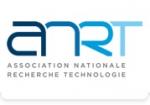Hazard assessment of endrocrine disruptors with glucocorticoid activities in zebrafish embryos
| ABG-132283 | Thesis topic | |
| 2025-05-28 | Public funding alone (i.e. government, region, European, international organization research grant) |
- Ecology, environment
Topic description
OBJECTIves of the thesis
BACKGROUND
Various in vitro and in vivo bioassays, notably on zebrafish embryos, are used to assess the hazards of endocrine disruptors. These bioassays can be used to assess the EATS modalities (estrogenic, androgenic, thyroid and steroidogenic) of substances, but are limited in their ability to take into account other modes of action of substances on the endocrine system.
The hypothalamus-pituitary-interrenal (HHI) axis is of particular importance for the endocrine axis of organisms. This axis, controlled by the glucocorticoid receptor (GR) signaling pathway, is involved in numerous physiological processes such as immunity, development, metabolism and stress. Despite the central role of glucocorticoids (GC) and the HHI axis for organisms, to date there exists no regulatory test to assess the hazards of substances on GR signaling and the functioning of the HHI axis. Only an in vitro reporter gene assay has recently been pre-validated within the PEPPER platform, which will enable the glucocorticoid activity of substances to be screened.
In recent years, it has been demonstrated that glucocorticoid activity was highly prevalent in wastewater, and that sometimes aquatic environments are heavily contaminated with glucocorticoid active substances. Although GC have been shown to pose a risk to aquatic organisms, particularly fish, still little information is available on the effects of GC on aquatic organisms.
SCIENTIFIC CHALLENGES / OBJECTIVES
The aim of this PhD is to develop a methodological approach for assessing the hazards of substances with glucocorticoid activity, for which no validated regulatory test or assessment strategy exists.
The thesis will bring new information on the modes of action and the physiological and behavioral effects of these substances in fish, and to propose a strategy for assessing their hazards, based on in vivo bioassays using the zebrafish embryo.
OPERATIONAL CHALLENGES
Various OECD guidelines using fish embryos have been adopted during last years for assessing the endocrine disrupting nature of substances (OECD 250, 251 and 252). Currently, work is underway to include new parameters related to thyroid in OECD guideline 236. However, endocrine activities other than EATS remains to be considered. Indeed, current tests (in vitro, in vivo) do not consider the disruption of major endocrine signaling pathways or axes known to be targets and to induce pathophysiological and behavioral responses. Similarly, no strategy has yet been developed to assess the hazards and risks of endocrine disruptors.
The work undertaken in this thesis will help filling these gaps and meeting the expectations of scientific and regulatory bodies, by studying a fundamental physiological axis, the HHI axis.
ORGANIZATION OF THE WORK (METHODOLOGY, KEY STEPS)
Optimization of bioassays to screen substances with glucocorticoid activity
This work will be based on original transgenic zebrafish models developed by Ineris as part of previous projects. These transgenic models (cyp11c1-GFP; cyp3a65-GFP) express fluorescent reporter genes under the control of promoters of genes targeted by GC, in different tissues (kidney, intestine).
To test activation of the GR signaling and of GC synthesis pathways, cyp11c1 and cyp3a65 gene expression will be monitored in vivo in embryos from the two transgenic models. These in vivo fluorescence measurements will be complemented by the quantification of the expression of genes involved in the GR signaling pathway (fkbp5, klf9, pomc...) by RT-qPCR, allowing for some of them to determine GC interactions with other target organs (neuroendocrine system).
This part of the work will help determining which bioassays or combination of bioassays and complementary approaches (gene expression) are the most appropriate for studying GC (strongest effects, reproducibility of effects, etc.). Clobetasol propionate will be used as a model molecule because of its high affinity for GR.
Effects of substances with (anti-)glucocorticoid activity, alone or in mixtures
Using the approach determined in the first part of this thesis, bioassay responses to GR agonists (synthetic GC, natural GC...) and GR antagonist substances (synthetic progestins...) will be studied. Work on responses to a mixture of GR agonists and antagonists may also be carried out, to determine the response of our bioassays in a context of multiple contaminations.
Effects of GC on key physiological processes
In addition to molecular-scale measurements, physiological responses known to be disrupted in the presence of compounds activating GR signaling (hatching, cardiac activity, behavioral response) will be studied. The persistence of the effects of early exposure to GC will also be assessed in adult stages.
Proposing a strategy for assessing the hazards of GC
Eventually, the aim of this thesis is to propose an integrated and relevant strategy of tests and complementary approaches to improve the hazard assessment of substances with GC activity, using the zebrafish embryonic model.
Funding category
Funding further details
Presentation of host institution and host laboratory
The French National Institute for Industrial Environment and Risks (Ineris) is an industrial and commercial public establishment under the aegis of the Ministry of the Environment. The Institute’s mission is to contribute to the prevention of risks caused by economic activities to health, environment, and the safety of people and goods.
Candidate's profile
Master 2 or equivalent in environmental toxicology, ecotoxicology, pharmacy or biology. Regulatory training in animal experimentation would be a plus. Skills : - Previous laboratory experience is mandatory - Previous experience in molecular biology and/or handling animal models would be a plus - An interest in human and environmental health issues - Good communication skills (written and spoken) in English - Self-motivated and rigorous, with a strong scientific ethic - Team player
Vous avez déjà un compte ?
Nouvel utilisateur ?
Get ABG’s monthly newsletters including news, job offers, grants & fellowships and a selection of relevant events…
Discover our members
 Nokia Bell Labs France
Nokia Bell Labs France  PhDOOC
PhDOOC  Institut Sup'biotech de Paris
Institut Sup'biotech de Paris  MabDesign
MabDesign  SUEZ
SUEZ  ADEME
ADEME  Groupe AFNOR - Association française de normalisation
Groupe AFNOR - Association française de normalisation  CASDEN
CASDEN  ASNR - Autorité de sûreté nucléaire et de radioprotection - Siège
ASNR - Autorité de sûreté nucléaire et de radioprotection - Siège  Aérocentre, Pôle d'excellence régional
Aérocentre, Pôle d'excellence régional  Tecknowmetrix
Tecknowmetrix  ONERA - The French Aerospace Lab
ONERA - The French Aerospace Lab  Ifremer
Ifremer  Généthon
Généthon  CESI
CESI  Laboratoire National de Métrologie et d'Essais - LNE
Laboratoire National de Métrologie et d'Essais - LNE  TotalEnergies
TotalEnergies  ANRT
ANRT  MabDesign
MabDesign
-
JobRef. 132742Genève, Switzerland
 EPSU
EPSUProfesseur de Biologie UP à Genève
Scientific expertises :Biology - Biochemistry - Chemistry
Experience level :Confirmed
-
JobRef. 132696Montreal, CanadaMcGill University
Post-doctoral position in medicinal chemistry
Scientific expertises :Chemistry - Biochemistry
Experience level :Junior





